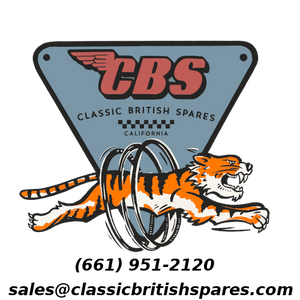Tech Tip: Shimming Valve Springs
The method of shimming valve springs dates all the way back to the turn of century when mechanics and tuners alike would try to retain the stock valve characteristics as much as possible.
Today's Tech Tip post I wanted to briefly touch base with you on is called valve spring shims or valve spring "boosters" and why you should use shims on your next top end rebuild; rather that just installing or replacing your springs.
I am not an "expert" when it comes down to valve train. I have done some heads in my time but installing and figuring which valve spring shim you desire is a rather simple process which can make a big impact.
Let's answer a few questions that often come up regarding valve spring shims.
1 - why do I have to shim my valve springs?
Over time as your valve seat starts to wear (and from cutting seats) you're valve will begin to "sink" into the head. Once your valve starts to "sink" into the head your valve spring installed height begins to change.
To accommodate the change you must use valve spring shims under the bottom valve spring collar to make up for what you have lost at the valve seat-
2 - how do I figure out which shims my head requires?
Figuring out which valve spring shims you desire is solely based off of your application. Most modern workshop manuals will give you a figure referring to "valve spring installed height" and you must make sure your valve springs (at the given height) is the same to or as close to the book.
For example, a BSA C15 book with the sports head calls for an installed valve spring height @ 1 5/16". When I measure valve springs in the head and the valve is closed, my springs should be 1 5/16".
If for some reason the springs are 1 9/16" I must shim the bottom spring to close the "gap".
3 - what happens if don't shim my valve springs?
A loss of seat pressure could cause valve float, premature wear and loss of compression. Although these problems are pretty rare in occurrence it is vital to check beforehand.
Installation

When installing valve spring shims you must 1 figure out the size you need (thickness) and also take into account the I.D. and O.D. of the shim when you are searching for an assortment.
Once you have the correct valve spring shim you must take your shims that you will be using and slip them over the valve guide. (See photo)
When the correct amount of valve spring boosters are in place you can then install you bottom retainer, valve springs, top retainer and then your keepers.
Thicknesses & Sizes

Valve spring shims come in most sizes and thickness to accommodate each type of engine whether it be automotive or for a motorcycle.
Always double check your measurements to ensure that you get the correct valve spring shims the first time.
Drop us a comment
Thanks for reading today's quick tech post regarding valve spring shims. If you have any questions please feel to drop us a comment below or if you have any questions.
You can always reach us on our business line during operating hours. Click here for more blogs and technical information just like this post.
Thanks for reading!

ken profili
working on a 1960 triumph tr6 trophy 650cc -what is the correct valve height measurement, thank you,ken profili
Nndwamato Freddy
I am looking for Nissan premera 2lt valve shims
William Anthony Brenton
Working on a 71 triumph 650 motor, need to know valve height measurement. Thank you.
Classic British Spares
@Geoff – Thanks for reading and for commenting today! You are 100% correct. Have a great weekend!
Geoff
Nice tech article on VS shimming. Most shade tree and home shopping mechanics have no clue!!
They don’t get the further the valve face gets cut into the seat the stem sticks out longer less spring tension valve bounces on seat and can get ugly!! Thanks for what you do!!